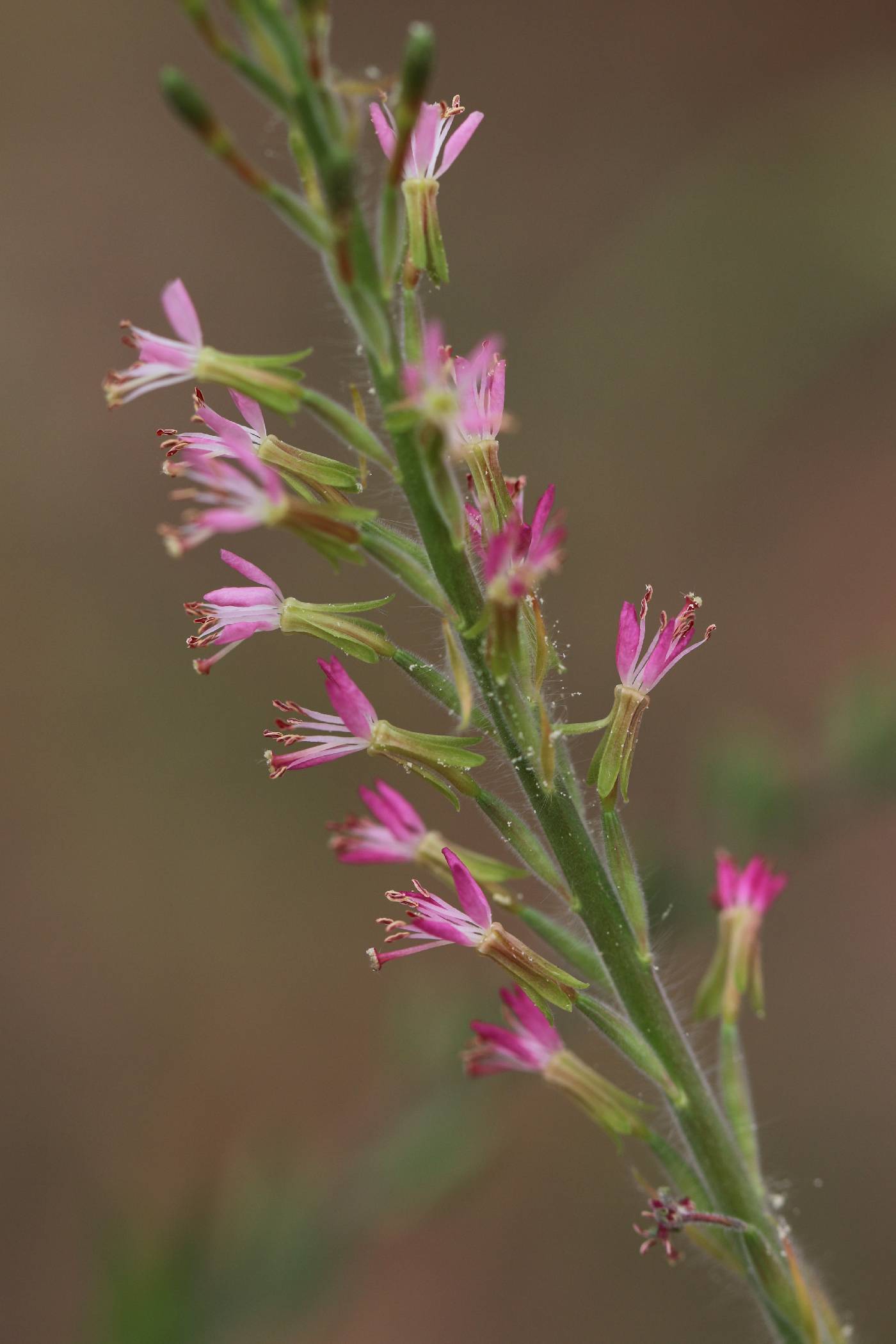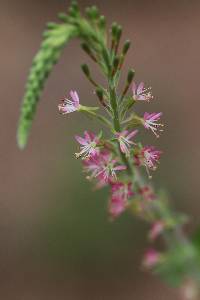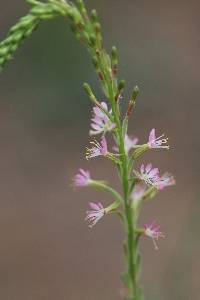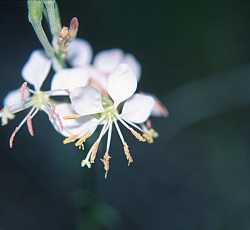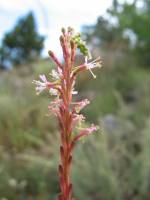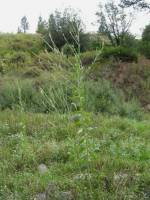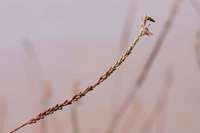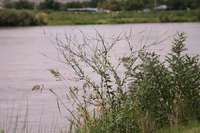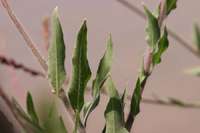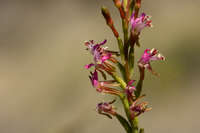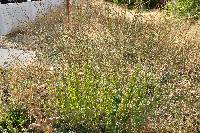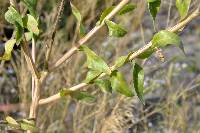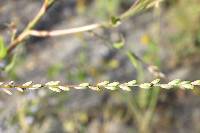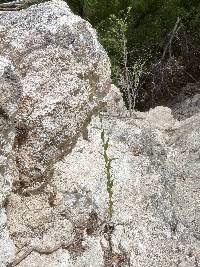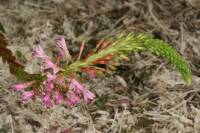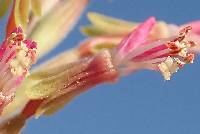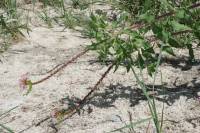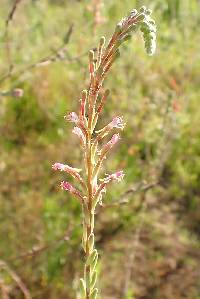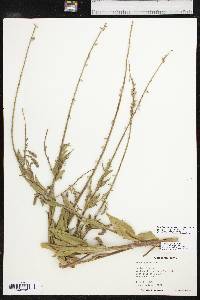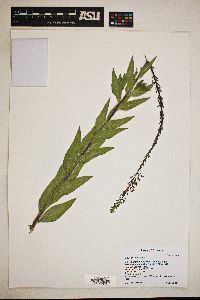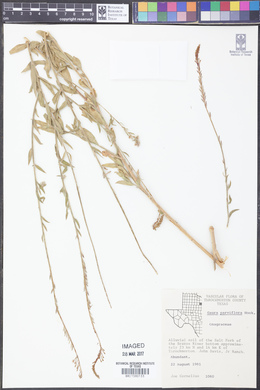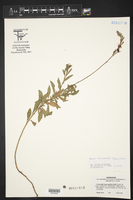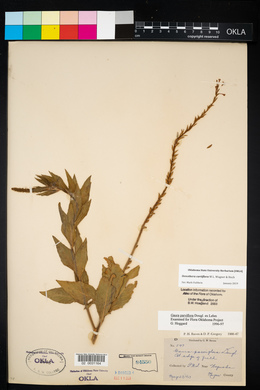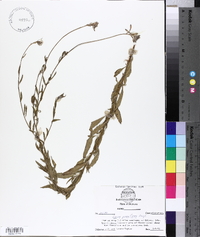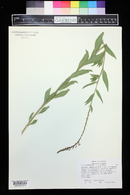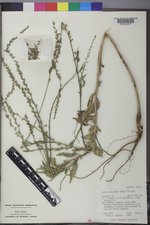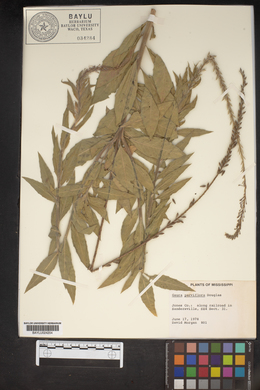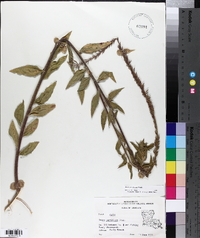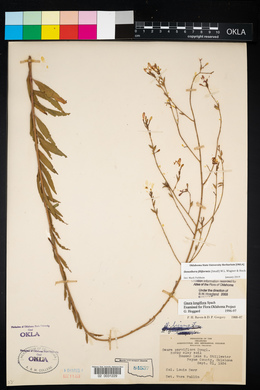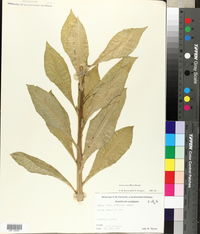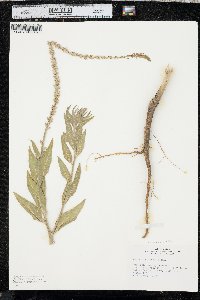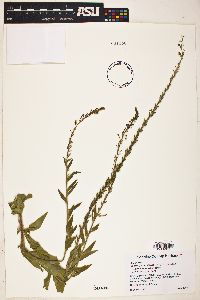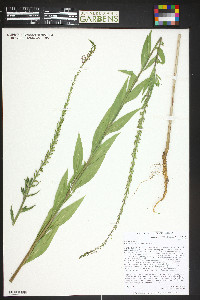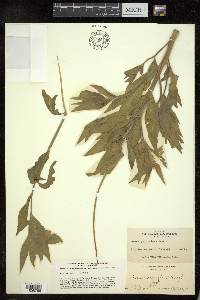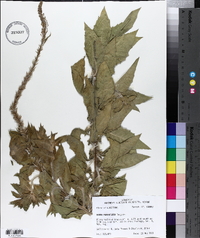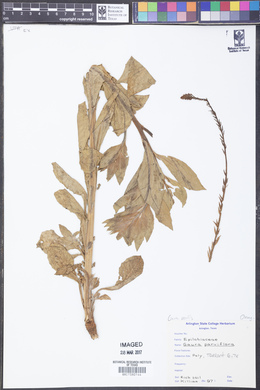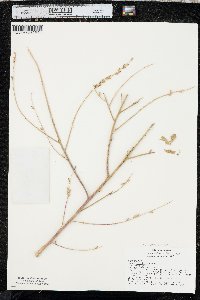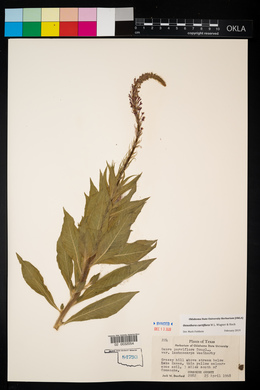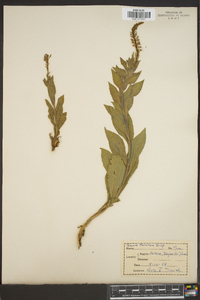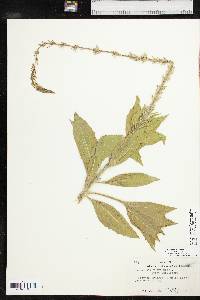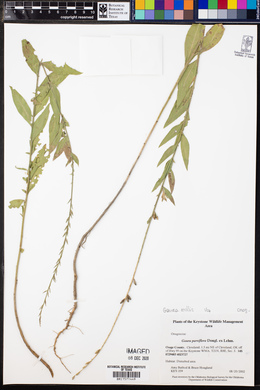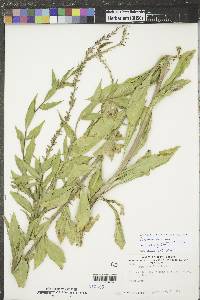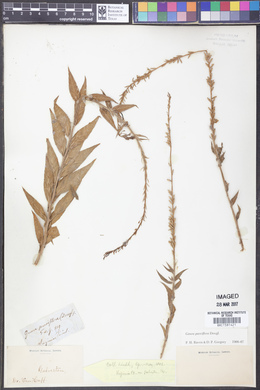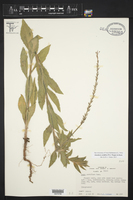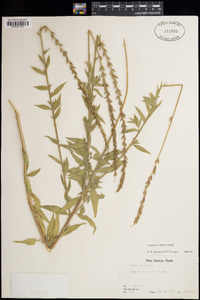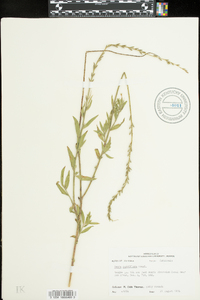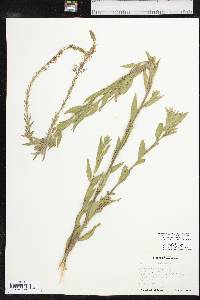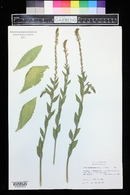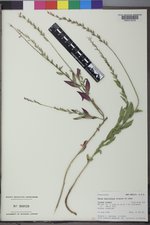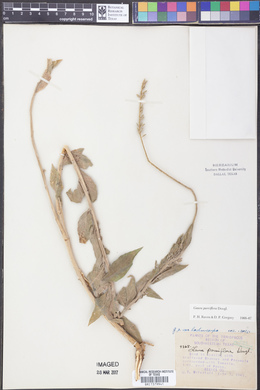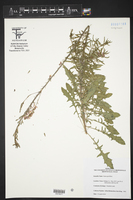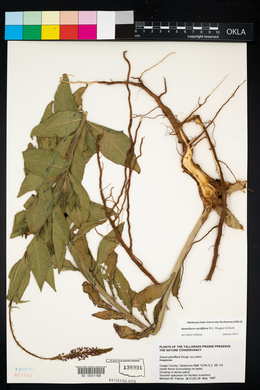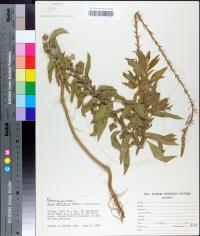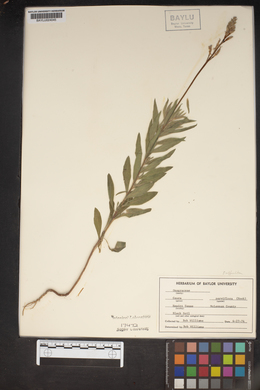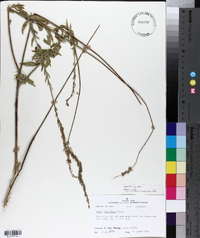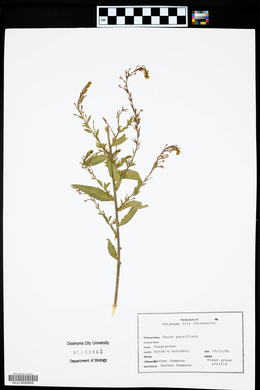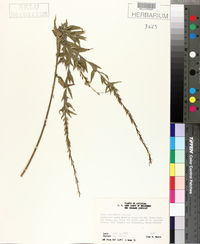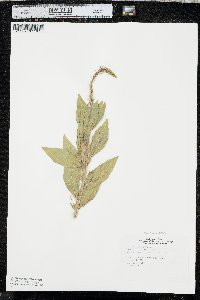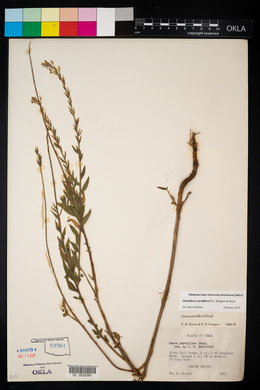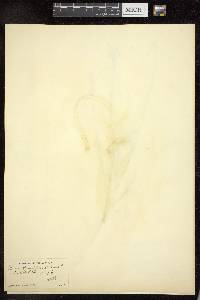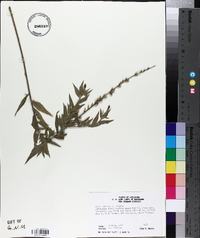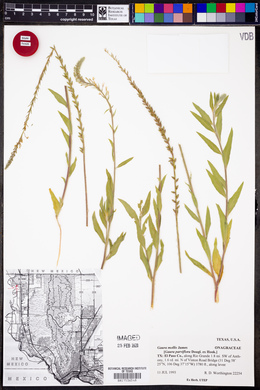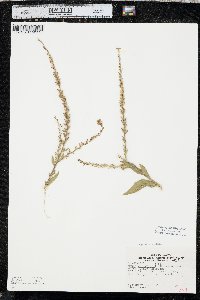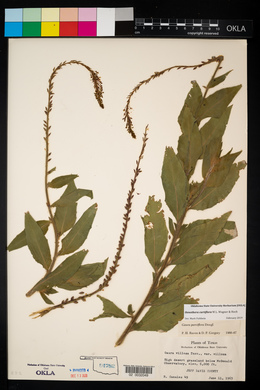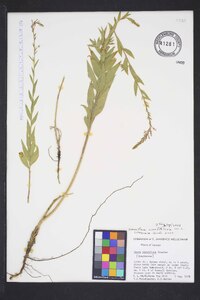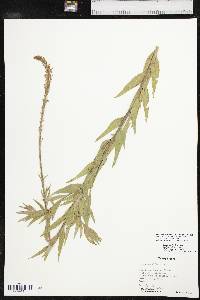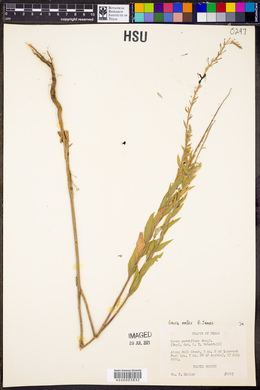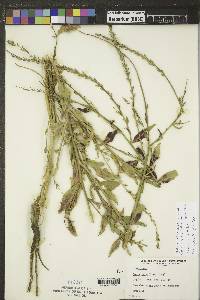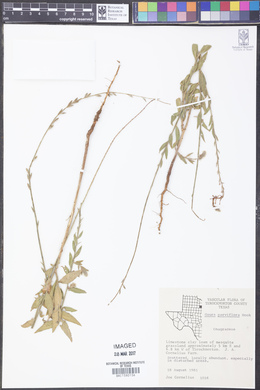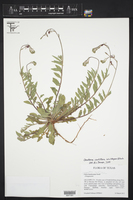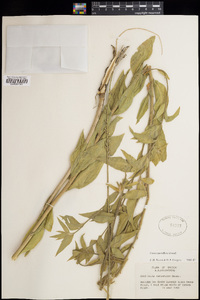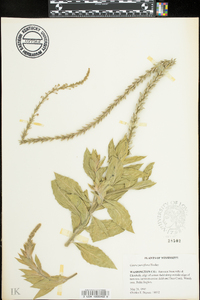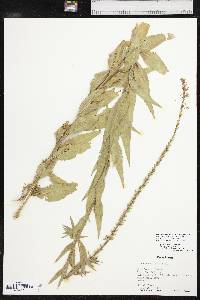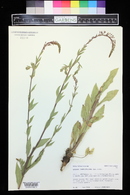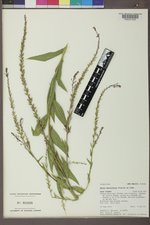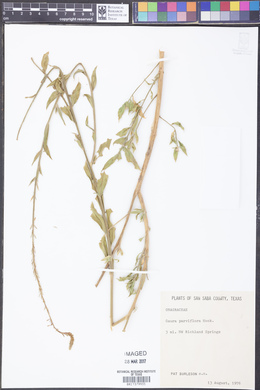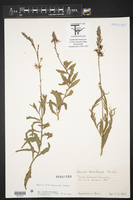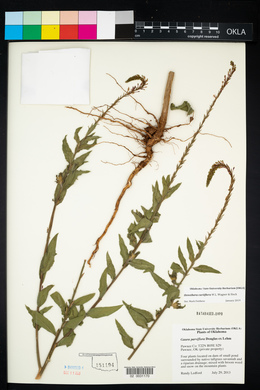Oenothera curtiflora
|
|
|
|
Family: Onagraceae
Velvetweed, more...lizard tail, velvet weed, smallflowered gaura, velvety gaura, willow gaura (es: linda tarde)
[Gaura micrantha D. Dietr., moreGaura mollis James, Gaura parviflora Dougl. ex Lehm., Gaura parviflora var. lachnocarpa Weatherby, Gaura parviflora var. parviflora , Gaura parviflora var. typica Munz] |
Wiggins 1964, Correll and Johnston 1970, Martin and Hutchins 1980, Heil et al. 2013 Duration: Annual Nativity: Native Lifeform: Forb/Herb General: Annual to biennial herb, 30-200 cm tall, from a stout taproot; stem solitary, erect, coarse, branching near the top; herbage clothed with soft long hairs, sometimes glandular. Leaves: Alternate along the stems, and in a basal cluster; blades lance-ovate to narrowly elliptic, 2-13 cm long and 5-40 mm wide, the margins often lined with small teeth near the tip of the leaf. Flowers: Small, white to pink, self-pollinating, and slightly asymmetrical; arranged in elongate many-flowered spikes at branch tips; floral tube (the part of the flower below the sepals) 1-5 mm long; sepals 4, reflexed (pointed downward) at full flower, 2-4 mm long; petals 4, spatulate, 2-3 mm long, white to pink and quickly fading to a darker pink or red color. Fruits: Capsule woody, 5-10 mm long, spindle-shaped to lanceolate and 4-angled, tapering to a slender base; the surface glabrous or short-hairy; not splitting open to release the 1-4 oval-shaped seeds. Ecology: Found in weedy habitats such as fields, pastures, and streamsides, below 6,500 ft (1981 m); flowers June-October. Distribution: Throughout w and c N. Amer.; south to c MEX. Notes: A tall, robust annual which, depending on growing conditions, can reach 2 meters tall; distinguished by being densely glandular-hairy, and feeling velvety to the touch; the leaves are slightly wavy dentate; the flower spike is long, often drooping and crowded with small flowers which are sessile (attached directly to the central axis of the flower spike). Look for this species under Gaura mollis or Gaura parviflora in older texts; the entire genus Gaura was recently subsumed into Oenothera based on molecular data. Ethnobotany: Hopi used the root to treat snake bites. Navajo used it to treat burns, inflammation and snake bites. Etymology: Oenothera comes from the Greek oinos, wine, and therao, to seek or imbibe, alluding to the fact that the root of Oenothera biennis was used to flavor wine; curtiflora translates to short-flowered. Synonyms: Gaura mollis, Gaura parviflora var. lachnocarpa, Gaura parviflora var. typica Editor: SBuckley 2010, FSCoburn 2015, AHazelton 2017 Coarse, erect, taprooted, mostly single-stemmed annual or biennial to 2 m, branched above, glandular and softly spreading-villosulous; lvs lance-ovate to lanceolate or oblong, obtuse at base, remotely denticulate, to 10 cm; spikes much elongate, many-fld; fls autogamous, virtually regular; sep 2-3.5 mm, reflexed separately; pet 1.5-3 mm, turning pink; anthers 0.5-1 mm; fr glabrous or seldom short-hairy, 5-10 mm, fusiform to lanceolate, tapering to a sessile base, with a rounded rib on each of the 4 angles and a slender rib on each face; seeds 3-4; 2n=14. Weed of fields, pastures, streamsides, etc.; Ind. to Wash., s. to Tex. and n. Mex., and occasionally adventive eastward. May-Aug. Gleason, Henry A. & Cronquist, Arthur J. 1991. Manual of vascular plants of northeastern United States and adjacent Canada. lxxv + 910 pp. ©The New York Botanical Garden. All rights reserved. Used by permission. Plant: Annual forb to 2 m with stout taproot; often branching above the middle; herbage glandular Leaves: stem leaves alternate, soft velvety, elliptic to oblanceolate; inflorescence a spikelike raceme, erect, slender, many-flowered 20-30 cm long; ovary inferior; flowers small, petals ~2 mm long, pale to bright pinkish; filaments and style exerted Flowers: fruits hard, woody, indehiscent, nutlike, widest near the base. Fruit: fruits hard, woody, indehiscent, nutlike, widest near the base. From Flora of Indiana (1940) by Charles C. Deam In 1910 I found this plant well established in Indianapolis along White River near the Vandalia Railroad. Smith found it before this date well established in another section of Indianapolis. Standley, in 1930, found it to be plentiful in vacant lots in East Chicago, Lake County. He found it also in Porter County along a railroad. Chas. M. Ek found it well established east of Peru in Miami County. …… Indiana Coefficient of Conservatism: C = null, non-native Wetland Indicator Status: UPL |
|
|
|

